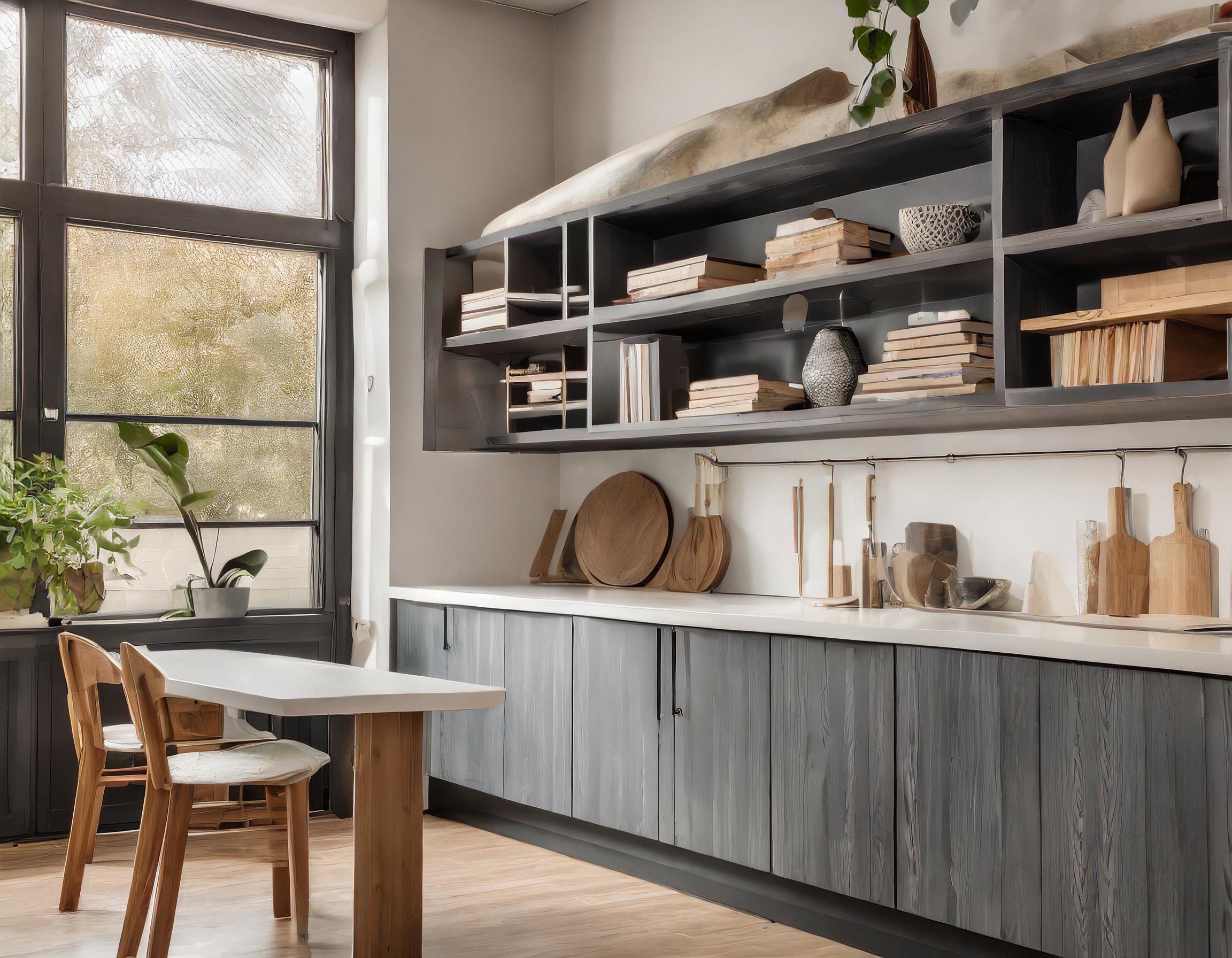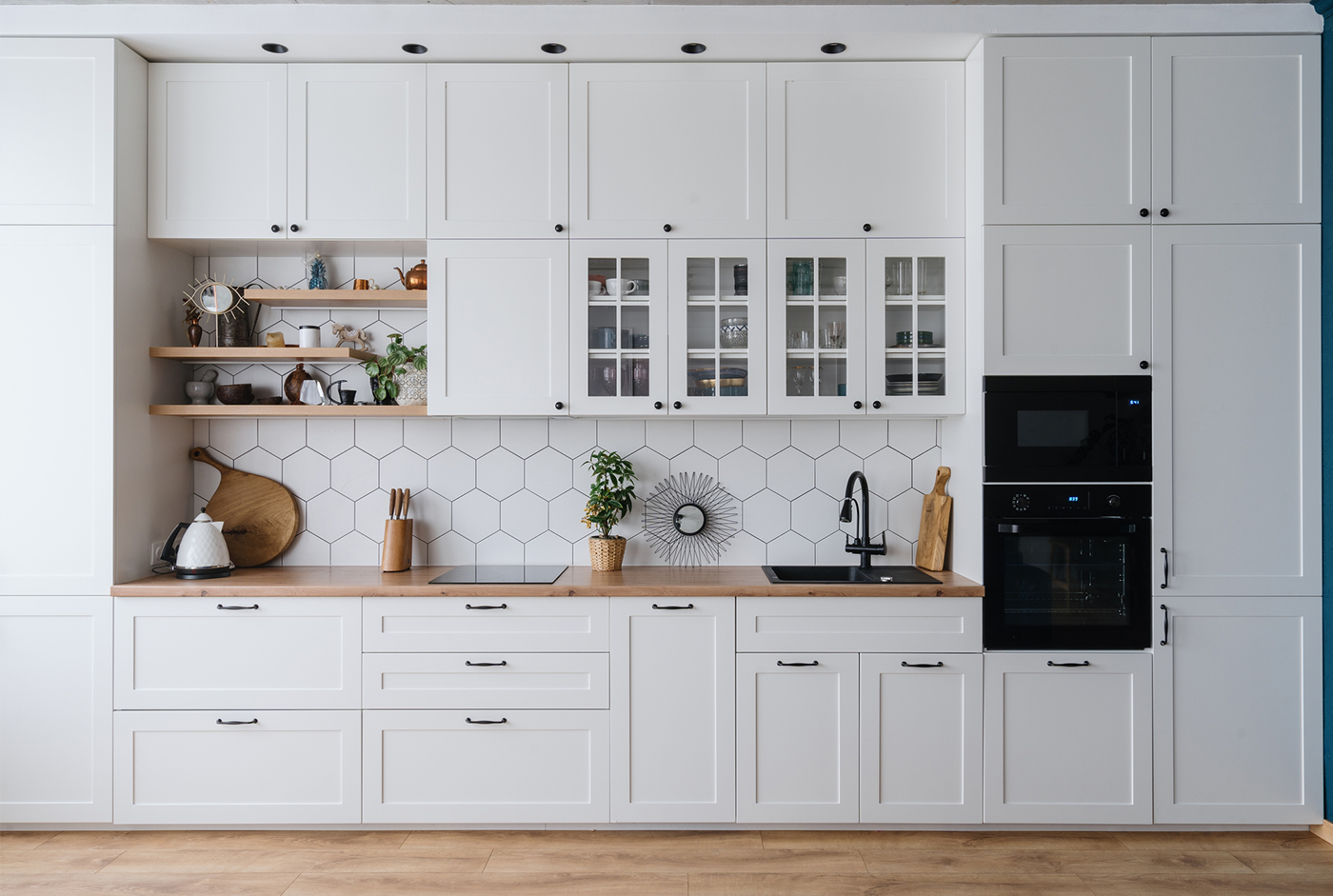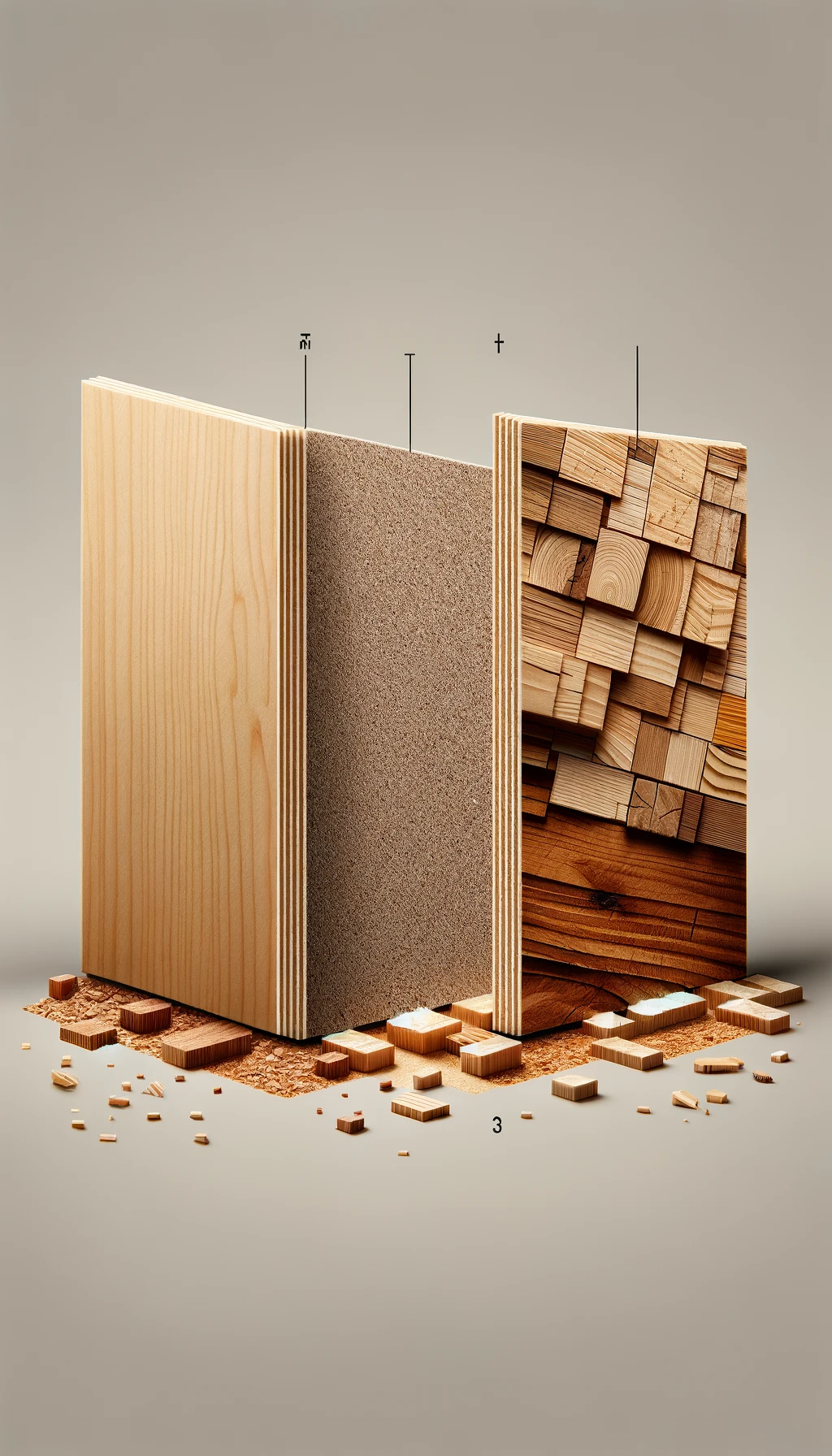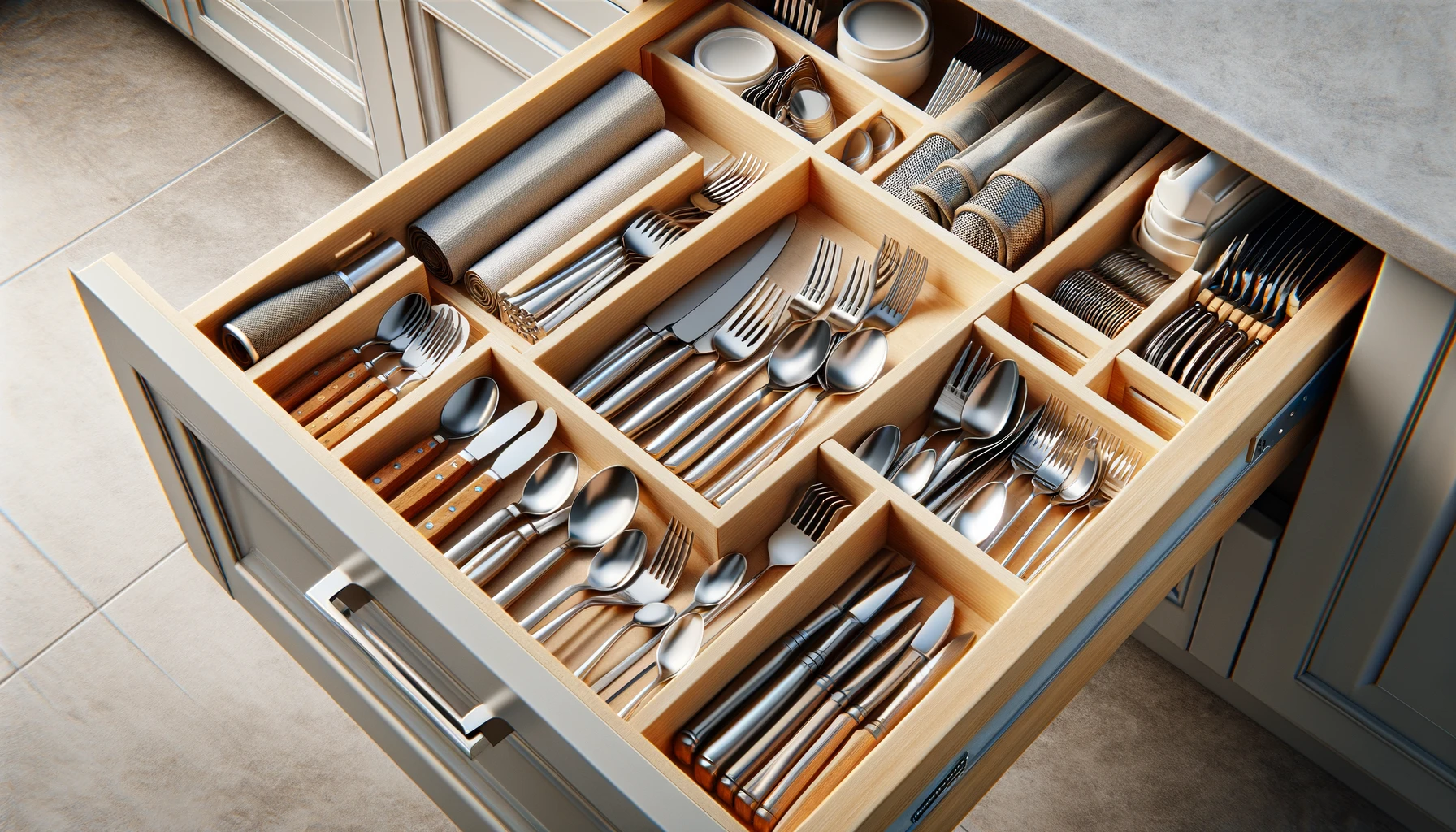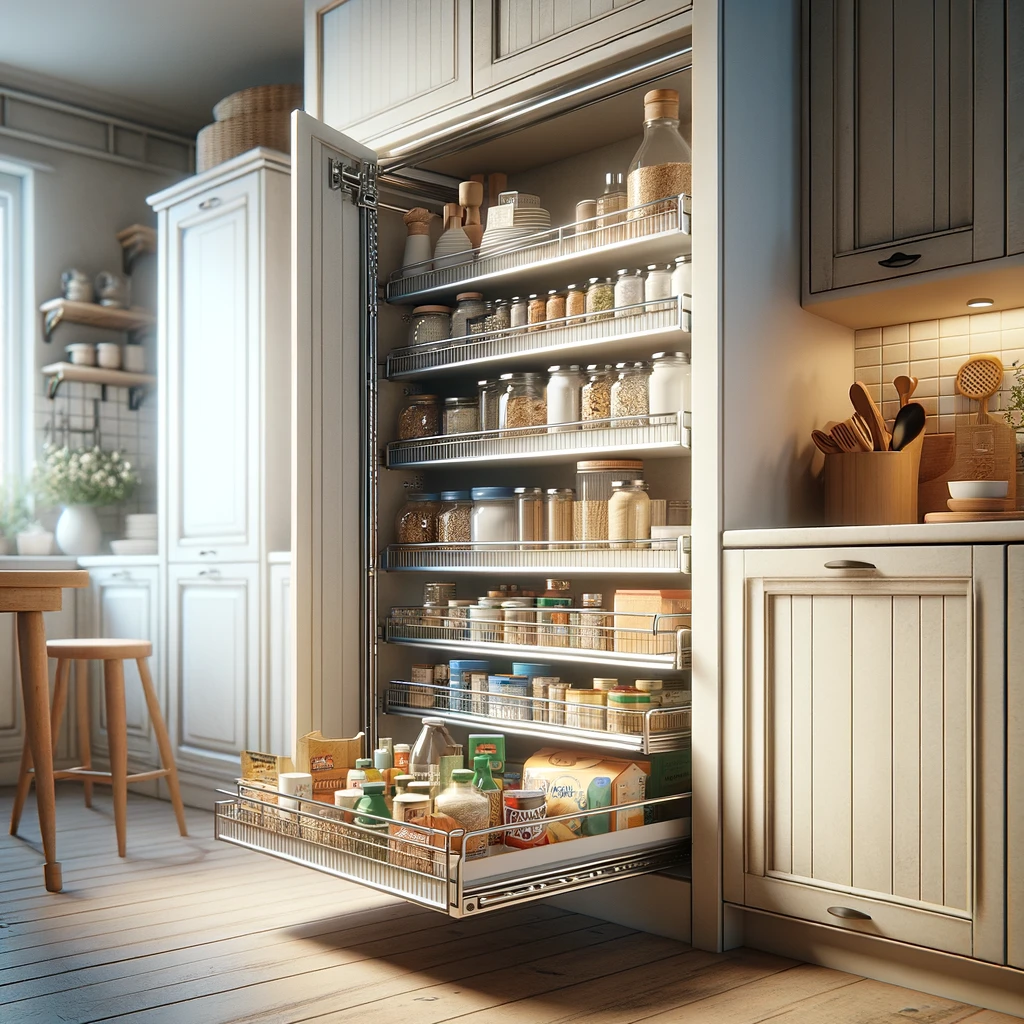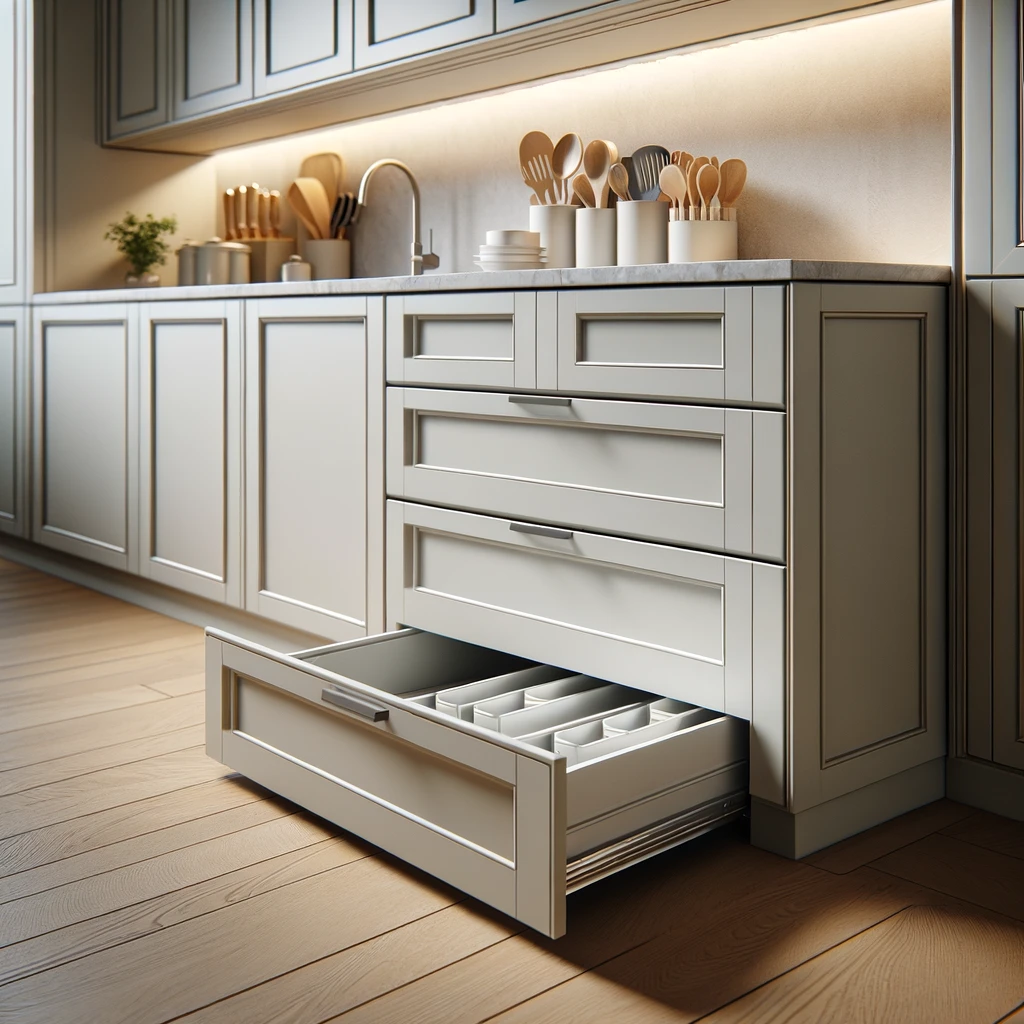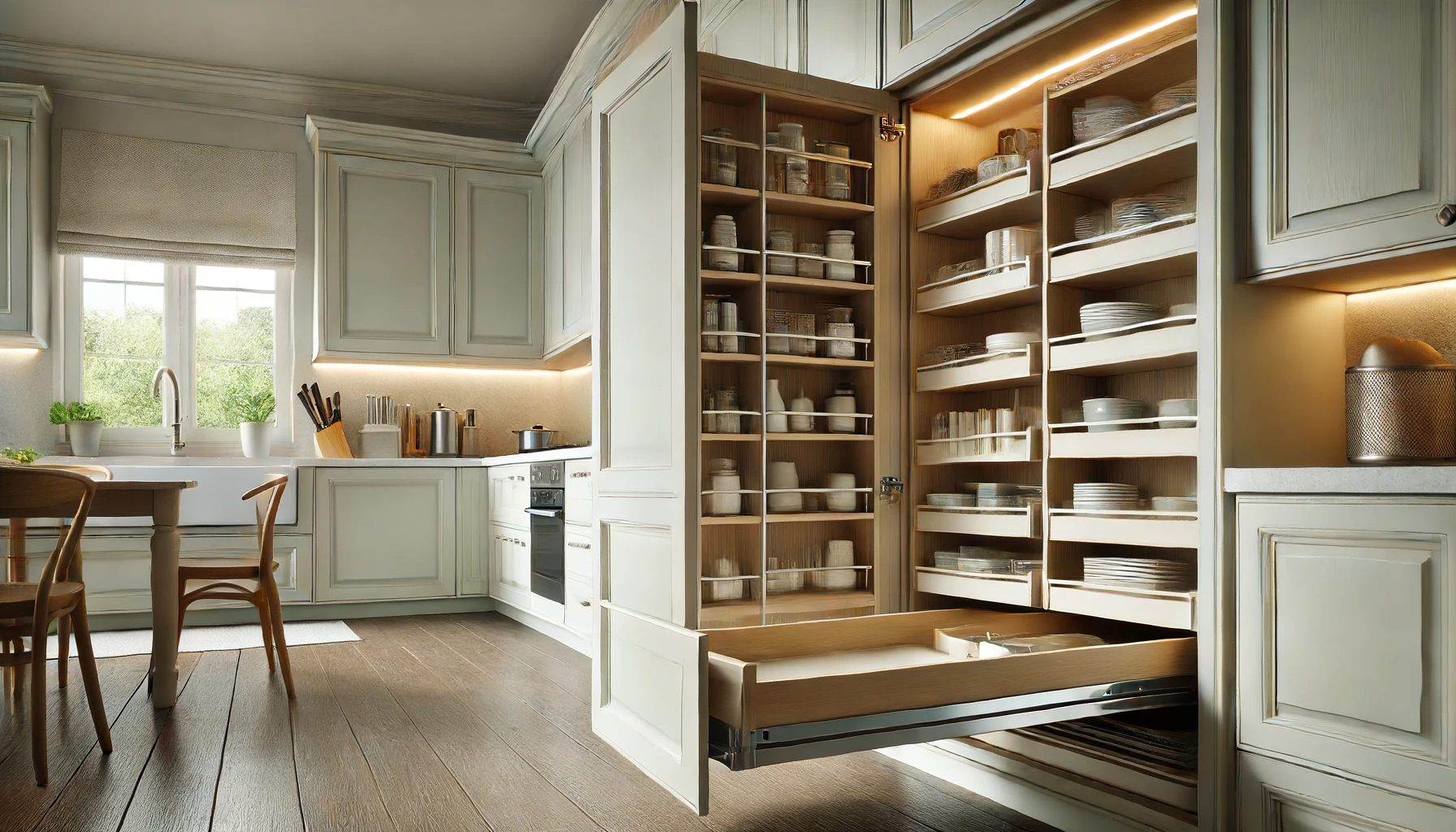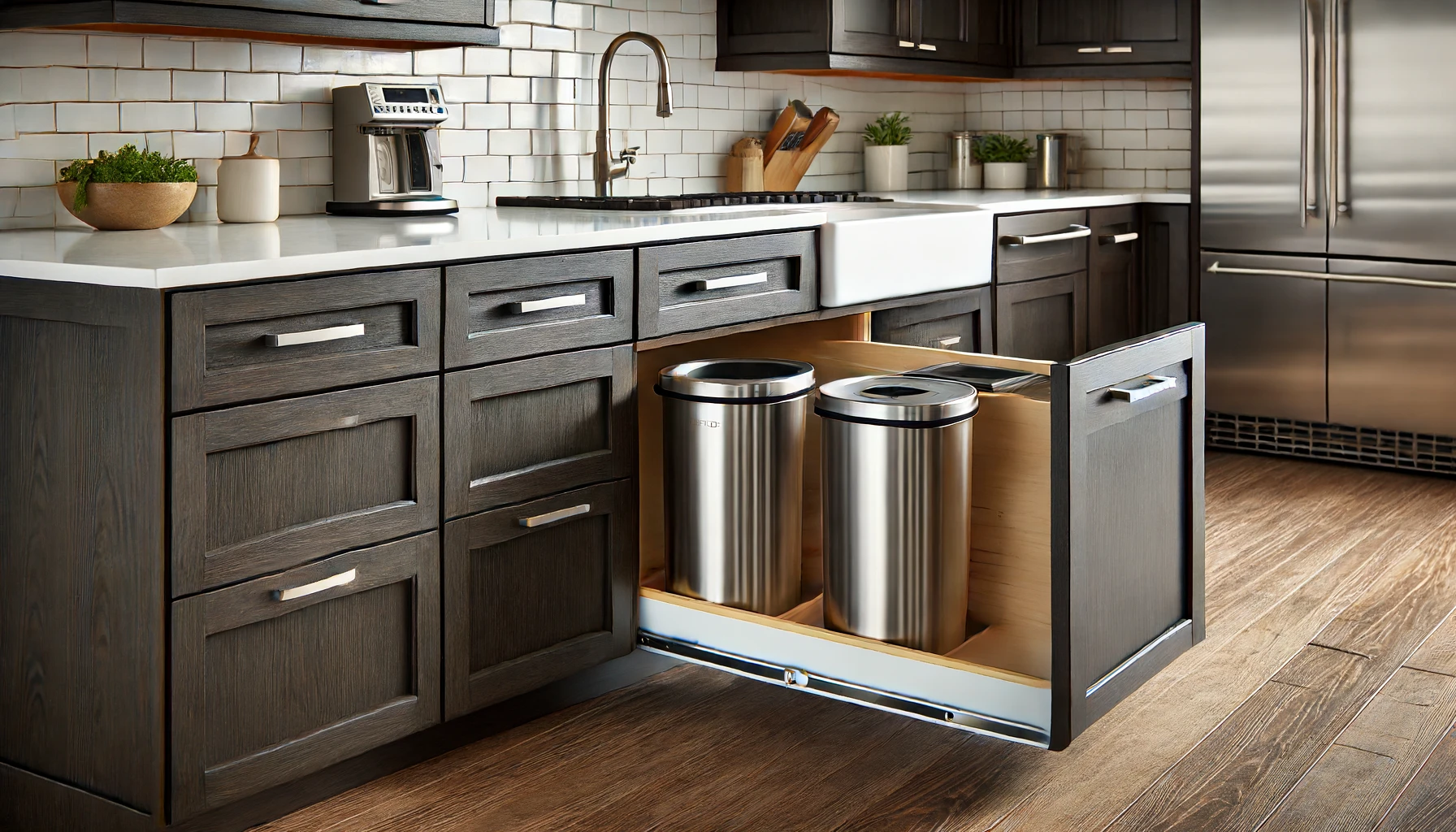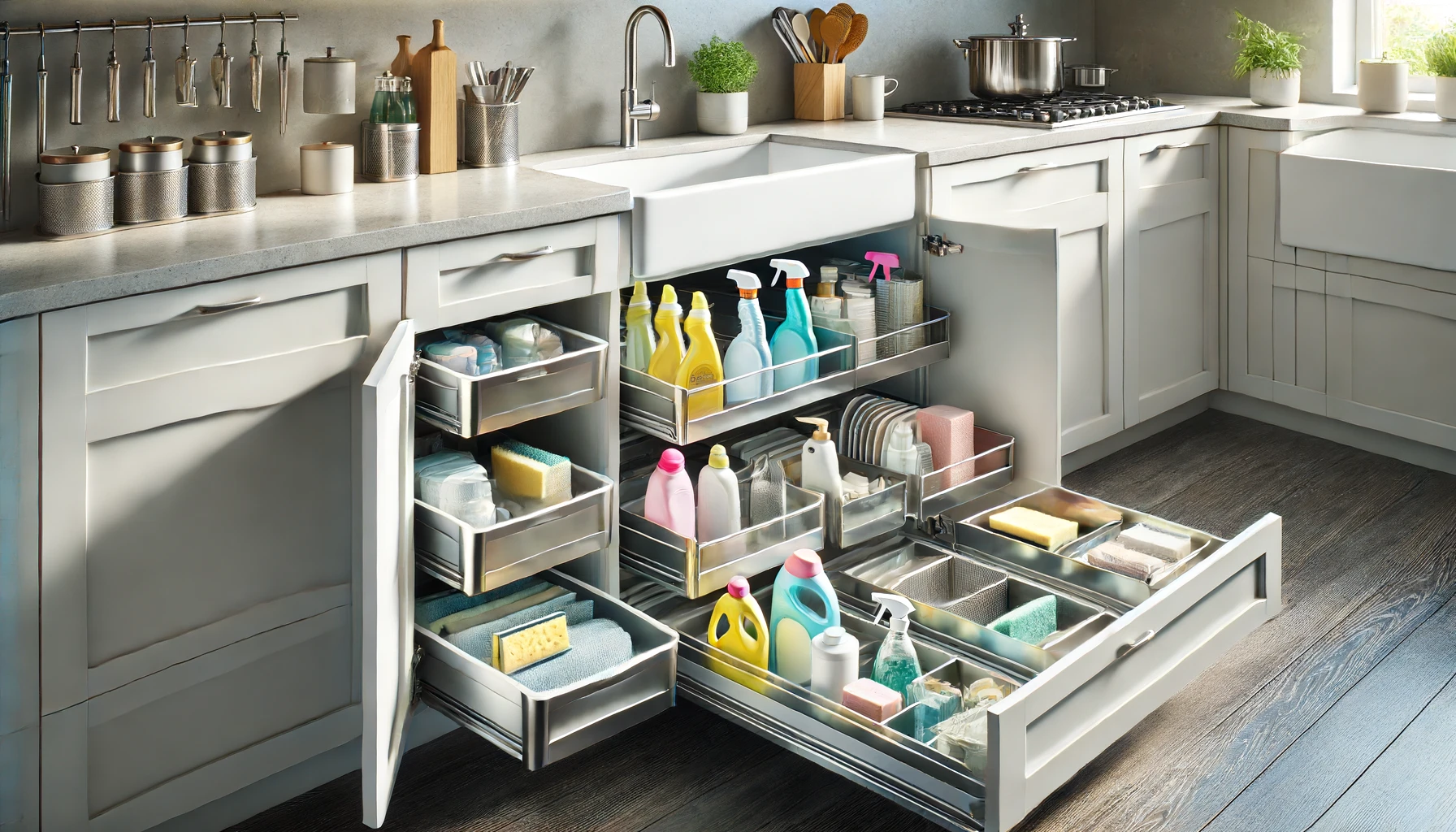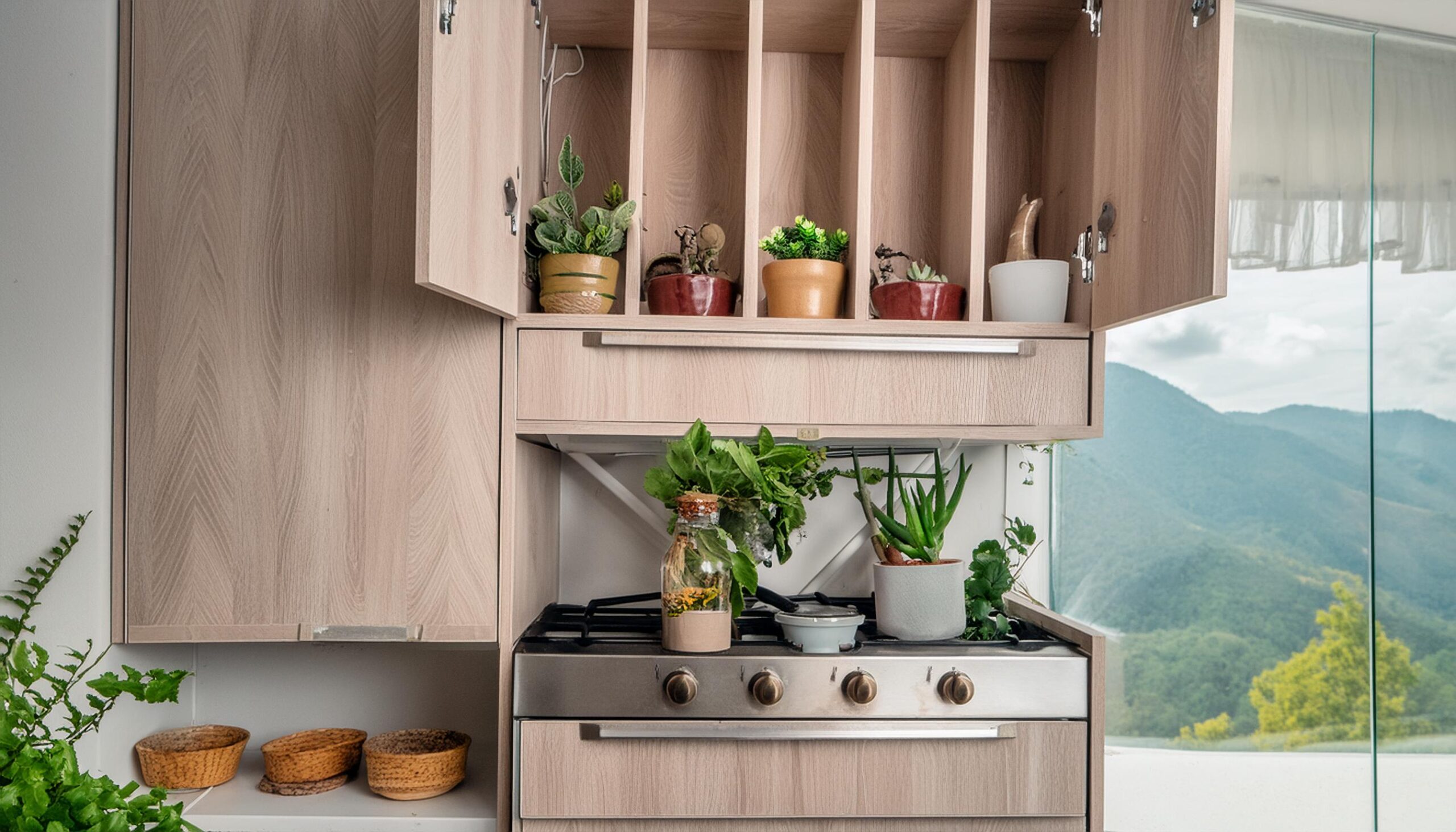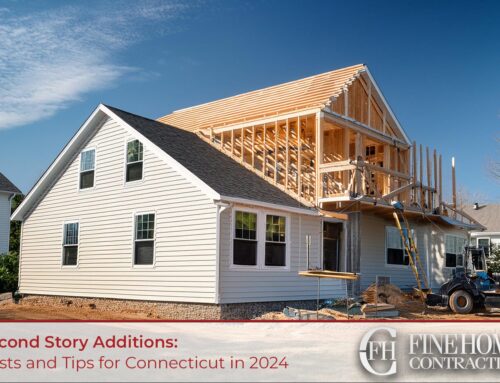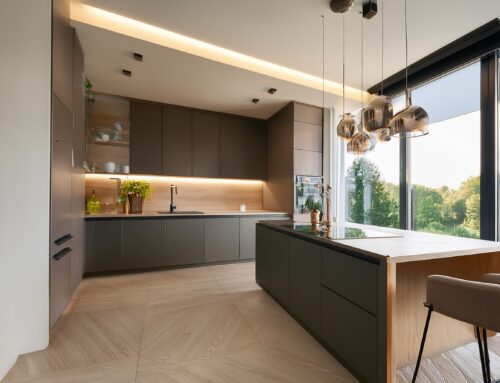Diving into a kitchen remodel? Feeling overwhelmed by terms like “beadboard” or “mullion”? You’re in good company. The realm of kitchen cabinetry is brimming with specialized lingo that can leave even seasoned renovators puzzled. We want to change that, and that’s why we’ve put together this huge list of kitchen and cabinet jargon to give you a foothold on what to expect when speaking with remodelers and contractors. Whether you’re looking for a complete kitchen remodel, just replacing your cabinets, or looking at starting your own remodeling service, knowing these key terms is a great start to your home improvement journey!
Cabinet Construction
Door Construction Styles
- Full Overlay: These doors cover the cabinet’s face frame entirely, offering a continuous facade that maximizes space and appeals to modern sensibilities.
- Partial Overlay: Opting for tradition, these doors partially cover the face frame, allowing its structure to peek through, often at a more budget-friendly price point.
- Full-Inset Cabinets: Precision-crafted, these cabinets’ doors fit snugly inside the frame, flush with the cabinet’s edge, showcasing meticulous craftsmanship.
Full overlay cabinets offer a sleek and modern look by covering the entire face frame, creating a seamless appearance, whereas partial overlay cabinets reveal more of the frame for a traditional aesthetic and can be more cost-effective. Full-inset cabinets, on the other hand, are known for their precision and craftsmanship, with doors that fit perfectly within the frame, flush with the surface, for a refined and classic style.
- Shaker: The hallmark of Shaker-style cabinet doors is their simple, unadorned design featuring a flat, recessed panel framed by a four-piece wood border. This style, rooted in the principles of simplicity and functionality, adapts seamlessly to both traditional and contemporary kitchens, offering a clean and timeless look.
- Raised Panel: Characterized by a center panel that is elevated above the surrounding frame, raised panel doors add depth and detail to cabinetry. This style is often associated with more traditional or classic kitchen designs, where the intricate shadows and highlights of the panels contribute to a luxurious and ornate aesthetic.
- Slab (Flat Panel): Slab doors, also known as flat panel doors, embody minimalism with their sleek, unbroken surface. This door style is a staple in modern and contemporary kitchen designs, offering a smooth and clean appearance that highlights the beauty of the material and finish without additional ornamentation.
- Glass-Front: Glass-front cabinet doors feature a transparent or translucent glass panel, encased in a wood or metal frame, allowing for the contents of the cabinet to be visible. This door style can open up a kitchen space, making it feel larger and brighter, and is perfect for displaying decorative dishes, glassware, or cherished collectibles.
Box Styles
Materials
- MDF (Medium Density Fiberboard): A stalwart for painted doors, MDF’s smooth surface resists warping, crafted from wood fibers, resin, and wax.
- Plywood: Known for its resilience, plywood’s layered construction wards off shrinking and warping, making it a go-to for sturdy cabinet boxes.
- Particleboard: Budget-friendly yet less durable, particleboard is made from compressed wood particles, often used in cost-effective cabinetry.
Other Cabinet Construction Terms to Know
- Frameless Cabinets: These modern marvels ditch the traditional cabinet frame, offering a seamless look with doors that attach directly to the cabinet box.
- Face Frame: Sporting a solid frame attached to the cabinet box’s front, these cabinets lend strength and a classic aesthetic, anchoring doors and hinges.
- Soft Return: This ingenious feature ensures doors and drawers close softly, maintaining kitchen tranquility by preventing slamming.
- Aesthetics:
- Mullion Cabinet Doors: Featuring glass panels divided by wood strips (mullions), these doors add a decorative touch, perfect for displaying cherished items.
- Beadboard Paneling: This textured paneling adds a rustic or cottage charm to cabinet doors, evoking warmth and coziness in the kitchen space.
- Corbel: Beyond mere support, corbels add an element of elegance to cabinets, with designs ranging from simple to intricate, enhancing the kitchen’s architectural beauty.
- Crown Molding: A nod to sophistication, this trim graces the tops of cabinets, enriching the kitchen’s aesthetics and perceived height.
- Valance: This decorative panel, spanning the bottom of upper cabinets, conceals lighting or adds flair, available in various styles to match your kitchen’s theme.
- Construction Styles:
- Dovetail: Celebrated for their durability, dovetail joints feature interlocking teeth, creating a robust connection ideal for drawer construction that stands up to frequent use.
- Dado: A woodworking technique involving a groove cut into one piece of wood that precisely accommodates another piece, ensuring a snug and stable assembly in cabinet boxes and shelving.
- Carcass: The cabinet’s backbone, this main body holds everything together, setting the stage for doors, drawers, and hardware.
- Edge Profile: The door and drawer edges’ shape, from squared to beveled, adds character and complements your cabinet’s overall style.
Hardware
For Convenience: We recommend these features on all cabinets where they can be incorporated into the budget. These accessories make your cabinets feel smoother, close quieter, and overall make your kitchen feel more luxurious.
- Drawer Glides: Essential for smooth operation, these mechanisms allow drawers to slide in and out effortlessly. Options include side-mount, under-mount, and center-mount glides, each offering distinct benefits in functionality and aesthetics.
- Easy Close (Soft-Close): This sophisticated feature ensures drawers and cabinet doors close softly and silently, preventing slamming and adding a touch of luxury to your kitchen experience.
Cabinet Pulls and Knobs
When deciding between pulls and knobs for your cabinetry, it’s essential to consider both style and functionality. Pulls, with their longer form, offer a more substantial grip and can contribute to a sleek, modern aesthetic, while knobs provide a classic and timeless appeal, making them versatile for various design themes. Your choice between the two can significantly influence the overall look and usability of your kitchen space.
Types of Cabinet Pulls
- Bar Pulls: Known for their straight lines and minimalist design, bar pulls are a favorite in contemporary and modern kitchens. They come in various lengths and finishes, from stainless steel to matte black, offering a sleek and straightforward appeal.
- Cup Pulls: Cup pulls, or bin pulls, offer a vintage or farmhouse vibe with their half-moon shape. They’re comfortable to grip and add a classic touch, especially when finished in brushed nickel or aged copper.
- Arch Pulls: Featuring a curved handle, arch pulls blend well with a variety of kitchen styles. They provide an ergonomic grip and add a soft, elegant curvature to cabinetry, available in finishes that range from chrome to oil-rubbed bronze.
Types of Cabinet Knobs
- Round Knobs: The quintessential cabinet knob, round knobs are versatile and timeless, fitting seamlessly into almost any kitchen design. From polished brass for a touch of warmth to crystal for a hint of glamour, the options are endless.
- Square Knobs: For those seeking a more modern or geometric look, square knobs offer clean lines and a contemporary feel. They work particularly well in kitchens with angular designs and can be found in a variety of materials and finishes.
- Novelty Knobs: Unleash your creativity with novelty knobs, which come in unique shapes, designs, and themes. From nautical to floral, these knobs can serve as conversation starters and personal expressions in your kitchen.
Specialty Cabinets & Features
While not all homeowners opt for these niche features, they may be worth considering if they fit into your kitchen workflow!
- Integrated Refrigerator Cabinet: This design camouflages your refrigerator, melding it with your cabinetry for a cohesive look.
- Spice Rack Pull-Out: A narrow, vertical cabinet designed to store spices in an organized manner. Positioned near the cooking area, it allows for easy access to spices, keeping them sorted and within reach without cluttering the countertop.
- Cutlery Drawer Inserts: Customizable inserts designed to fit within drawers, providing a dedicated space for utensils and cutlery. These inserts help maintain an organized drawer space, making utensils easily accessible and preventing clutter.
- Corner Drawers: An innovative solution for corner cabinet spaces, these drawers are angled to maximize storage in what would typically be hard-to-reach areas. They provide easy access to items stored at the back of the cabinet, making efficient use of corner spaces.
- Under-Cabinet Lighting: Lighting installed under wall cabinets to illuminate the countertop workspace below. This feature not only enhances the functionality of the kitchen by providing task lighting but also adds ambiance to the space.
- Pantry Pull-Outs: Tall, narrow cabinets equipped with racks or shelves that pull out, offering organized storage for pantry items. These pull-outs make it easier to see and access items stored in the back, improving the functionality of pantry spaces.
- Appliance Lifts: Hidden lift mechanisms installed in lower cabinets that allow for heavy appliances, like stand mixers, to be stored out of sight and easily lifted to counter height when needed. This keeps countertops clear and ensures appliances are easily accessible.
- Tray and Baking Sheet Organizers: Vertical dividers in cabinets or drawers that provide perfect slots for storing trays, baking sheets, and cutting boards upright. This organization feature prevents these items from getting stacked and makes them more accessible.
- Magic Corner Cabinets: A solution for blind corner cabinets, magic corners feature pull-out baskets or shelves that bring the entire contents of the cabinet out into the open, making use of otherwise wasted space and providing easy access to stored items.
- Toe-Kick Drawers: Hidden drawers built into the toe-kick space beneath base cabinets, offering additional storage for flat or seldom-used items like baking sheets or placemats. This clever use of space keeps items out of sight but within easy reach.
New Trends in 2024
(Updated 6/25/2024)
As kitchen design evolves, so do the terms and trends that define it. For 2024, the focus is on innovation, sustainability, and sleek aesthetics. Below are some of the newest glossary terms recently adopted by the industry, reflecting the latest advancements and preferences in kitchen cabinetry. These terms will help you stay up-to-date with cutting-edge trends and make informed choices for your kitchen remodel.
- Integrated Lighting:Cabinets with built-in LED lighting for enhanced visibility and ambiance.
- Handleless Cabinets: Sleek, modern cabinets with touch-latch or push-to-open mechanisms, eliminating traditional handles.
- Mixed Materials: Combining different materials such as wood, metal, and glass within the same cabinet design for a unique look.
- Textured Finishes: Cabinets with finishes that add tactile interest, like brushed metal or embossed wood patterns
- Smart Storage: Innovative storage solutions like motorized shelves, pull-out pantries, and automated drawers.
- Customizable Interiors: Cabinets with adjustable interiors, allowing homeowners to tailor storage to their specific needs.
- Invisible Hinges: Hinges that are completely concealed when the cabinet door is closed, offering a seamless look.
- Modular Cabinets: Cabinets designed in modules that can be rearranged or added as needed for flexibility and customization.
Further Reading
To deepen your understanding and inspire your kitchen remodel journey, here are some handpicked resources that offer valuable insights and ideas:
- “Kitchens: Creating Beautiful Rooms from Start to Finish (House Beautiful Design & Decorate)“: This book offers a comprehensive look at kitchen design, from layout planning to selecting materials, ensuring your space is both beautiful and functional.
- “Cabinet Making for Beginners“: An online course that walks you through the basics of cabinet construction, ideal for DIY enthusiasts looking to understand the craftsmanship behind their kitchen cabinets.
- This Old House: Our #1 Recommendation for all things home improvement and entertainment focused.


